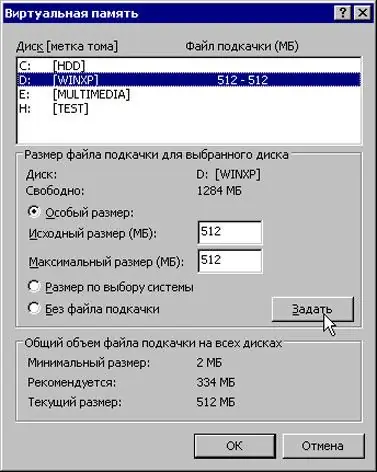Paging files (“swap-file”, “paging-file”) are a necessary extension of the amount of RAM on your computer, the so-called virtual RAM. The presence of swap files allows the entire system to run faster.

Instructions
Step 1
Paging files are system hidden files on your hard disk (pagefile.sys) that allow your computer's processor to receive and process information faster, and therefore produce the final result. They are especially necessary for "weak" computers with a low processor frequency and low RAM. If your computer often "freezes" on ordinary simple tasks, then virtual memory will come to the rescue.
Step 2
To create paging files, go to the "Start" - "Control Panel" - "System" - "Advanced" - "Performance" - "Options" - "Advanced" - "Virtual Memory" - "Change". We set the "Special size" of paging files (in MB) for each of the disks. We confirm with the "Set" and "OK" buttons. Do not forget that the paging files are only virtual memory, and therefore they cannot be used as a replacement for the operative memory - only as an aid, therefore the volume of paging files cannot be set more than the actual amount of RAM than 2-3 times. But with the complete absence or small amount of the paging file, problems may also begin with the failure of programs and even the system itself. Due to the lack of RAM, the computer may not be able to cope with the tasks.
Step 3
You can install paging files on all hard drives or on all partitions of a single hard drive, but it is more logical to create paging files on the drive where your computer's operating system is installed. If you are at a loss in choosing the amount of your virtual memory, then trust the system - select "By system choice" and click "OK". If the RAM of your computer is already enough, then select the item "Without paging files". For efficient operation of most programs under Windows XP, you need at least 1024 MB of real RAM.






